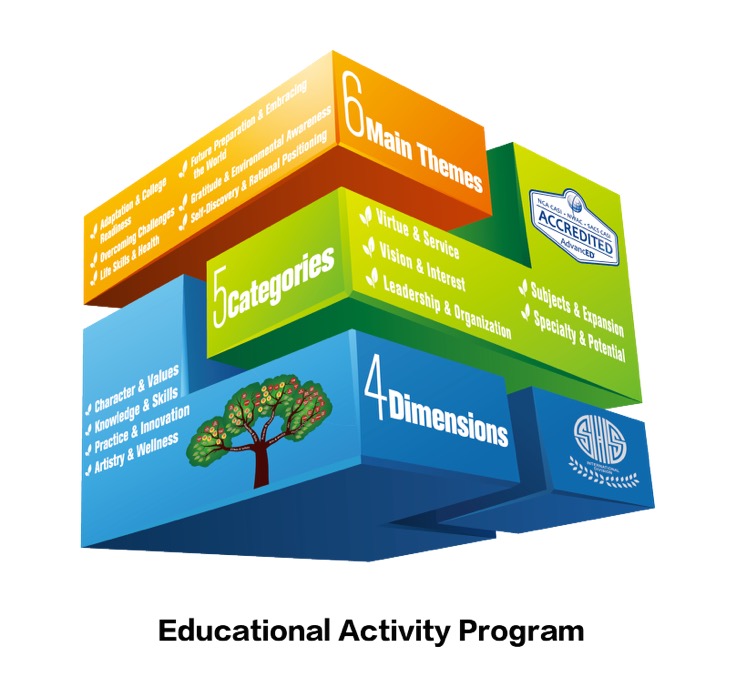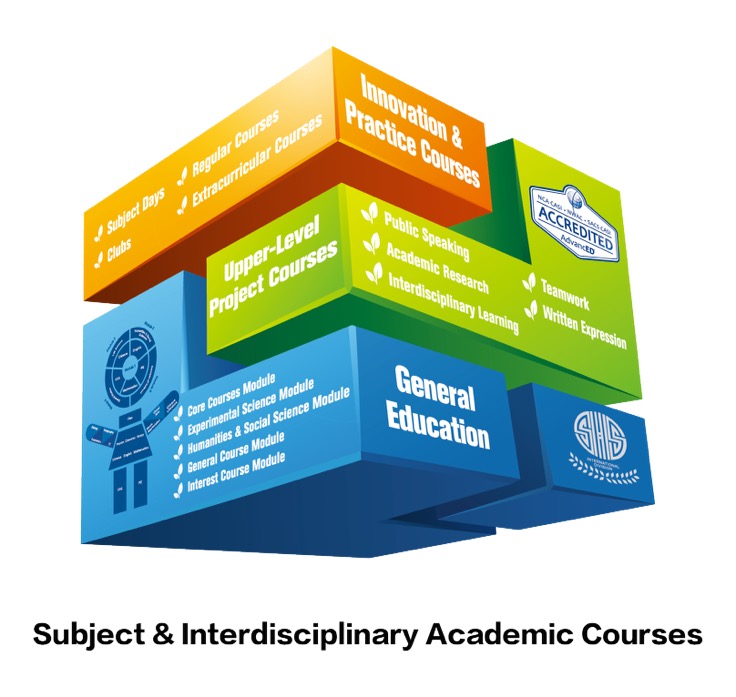-
ABOUT US
-
ACADEMICS
Curriculum Program
Departments
- English
- High School Chinese
- Primary and Junior School Chinese.
- High School Mathematics
- Middle School Mathematics
- Primary School Mathematics
- Music and Fine Arts
- Physical Education
- Physics
- Chemistry
- History and Geography
- Physical Science and Optional courses Department
- Middle School Biology
- High School Biology
- Social Sciences
- Computer Science
- Courses in Primary School
Achievements and Matriculations
College Counseling
Science & Technology Innovation Contest
Subject Competition
-
ARTS
-
ATHLETICS
-
AT SHSID
SHSID ∣ TIMES
PTSA
Club Exhibition
- 龙吟社
- Live 2 Drama
- Choir
- Hip-pop Dance Club
- The Primary School Dance Troupe
- Symposiums Club
- Biology Workshop
- You Shan
- VEX Robotic
- Peking Opera Club
- Baseball Club
- Model United Nations
- The World Scholar’s Cup
- Future Problem Solving Club
- United States Academic Pentathlon
- OM Club
- AMC Club
- Music for Patients
- SHSID Gazette
- Smile Charity
- Cultural Moments
- SciAcademy
- Stem Doge Alliance
- Chinese Debate Club
- IAA
- Mock Trial Club
- Zhengming Club
- Furry Friends
- GT-Racing
- Village Radio
- IMMC Club
- Creative Design and Intelligent Fabrication
- Future City Research Project
- ECOCAP
- AdvocaSEA
- SPDC
- Medishine
- Floorball Club
- Animusic MTC
- Wings Up
- All Booked
- Cyano
- Birding Community
Health and Wellness
Campus Safety
Cafeteria Service
-
ADMINISTRATION
-
ADMISSIONS
-
ALUMNI
Alumni Information
Honors Students
- Class of 2025
- Class of 2024
- Class of 2023
- Class of 2022
- Class of 2021
- Class of 2020
- Class of 2019
- Class of 2018
- Class of 2017
- Class of 2016
- Class of 2015
- Class of 2014
- Class of 2013
- Class of 2012
- Class of 2011
- Class of 2010
- Class of 2009
- Class of 2008
- Class of 2007
- Class of 2006
Who Studied at SHSID
SHS Foundation
-
DOCUMENTS
High School
(1) Educational Activity Program
In sum, the educational activity program has formed the rudiments of a network composed of a three-dimensional structure with four dimensions, five categories, and six main themes.
Four Dimensions
The co-curricular design of the “Tree” model for high school seniors emphasizes that students' life-long development should be cultivated from four dimensions. These four dimensions include: character and values, knowledge and skills, practice and innovation, and artistry and wellness, which are evaluated by the homeroom teachers through psychological and behavioral assessment, CAS curriculum, and other standards. These four dimensions were designed from a student development perspective.
Five categories
Our educational activity program is divided into five categories: virtue and service, subjects and expansion, vision and interest, specialty and potential, and leadership and organization.
These five categories were designed from an activity focused perspective.
Six Main Themes
The educational activities program for high school seniors focuses on student learning and experience in many fields, such as law, philosophy, culture, interpersonal communication, self-recognition, and so on. It is presented in the form of six main themes.
For example, we offer high school life enlightenment and planning courses on the theme of "Adaptation and College Readiness ", camps as well as life education and health education courses on the theme of "Life Skills and Health", adventurous courses on the theme of "Overcoming Challenges", farming and global citizen courses on the theme of "Gratitude and Environmental Awareness", a personality cognition course on the theme of “self-discovery and rational positioning”, and a legal education and multicultural education course on the theme of "Future Preparation and Embracing the World".
These six main themes were designed from a school implementation perspective.
The educational activities offered by SHSID are open to all students. We strive to build SHSID into an international first-class school, highlighting Chinese characteristics and integrating Chinese and Western educational concepts.

(2) Subject and Interdisciplinary Academic Courses
General Education
The development of subject and interdisciplinary academic courses in high school is based on the IB Diploma program and a US high school curriculum. They are divided into a ninth and tenth grade system and an eleventh and twelfth grade system. The two systems are independent of each other. The combination of the two systems coincides with the integration of a "human" model, which better highlights the "people- oriented" philosophy that the curriculum and education at SHSID has been adhering to.
SHSID not only provides core courses such as Chinese, English, Mathematics, Sports and CAS, but also provides different course modules for students to choose from. These include the experimental science module, the humanities and social science module, the general course module, and the interest course module.
There are 43 administrative classes in SHSID’s high school, and more than 683 subject classes can be selected. The ratio of administrative classes to subject classes is about 1:16. In the 2018-2019 school year, an eleventh grade student theoretically had 140,000 different class combinations to choose from.
Innovation and Practice Courses
The Innovation and Practice Course in High School aims to stimulate student interest and provide "learning by doing" opportunities. Through projects or outcomes, students focus on their interests and at the same time receive training in relevant research processes, paving the way for University learning. The Innovation and Practice Course covers science, technology, engineering, literature, art, and other fields, and is generally divided into the following four categories:
Regular Courses: These include PBL, Academy, etc. Regular courses cover all major disciplines in which students design projects and present achievements. Regular Courses are managed and implemented by teachers.
Extracurricular Courses: Extracurricular courses are managed and implemented by teachers.
Clubs: Guided by discipline, comprehensive competitions, innovation or exhibition, students set up clubs and manage them by themselves, with teachers as guides.
Subject Days : Subject Days emphasize both curiosity and academics and aim at enhancing student interest. Successful disciplinary activities have been well received,such as Pi Day (Mathematics Day), Mole Day (Chemical Day), Newton Day (Physics Day), Birth Day (Biological Week), Economic Day, History Day, MIX Day, and so on. They are managed and implemented by teachers.
Upper-Level Project Courses
Interdisciplinary large-scale project courses are "mandatory courses" for every 9-12 grade student. They aim to further build a platform for interdisciplinary learning, written expression, public speaking, academic research, teamwork, and other abilities.
Example: The theme of the 2024 Junior Project is "What can we do to improve the quality of life of people living in Shanghai?" The project requires students to form a group of 6-8 people and use knowledge and skills from at least six disciplines to cooperate on completing a "product". Every student must venture into the city of Shanghai to explore feasible research topics. The topic itself is left deliberately vague. For example, for whom is the “quality of life” measured? How does one determine the "quality of life"? If some people's quality of life is improving, does it mean that other’s may be declining? These vague and uncertain factors prompt students to truly think and care about the people and communities around them, which stimulates their speculative and academic potential. This project will last for one year. Students need to work in groups to manage their time well. Each group arranges two teachers from liberal art and science field to guide their research and observe the progress of the whole project in order to prepare for their final evaluation.

As an old Chinese saying goes, “It takes ten years to grow trees but a hundred years to cultivate talents”. The high school educational activity curriculum (represented by the “tree” model) and academic curriculum (represented by the “human” model) work in unison to contribute to the personal and lifelong development of every student.